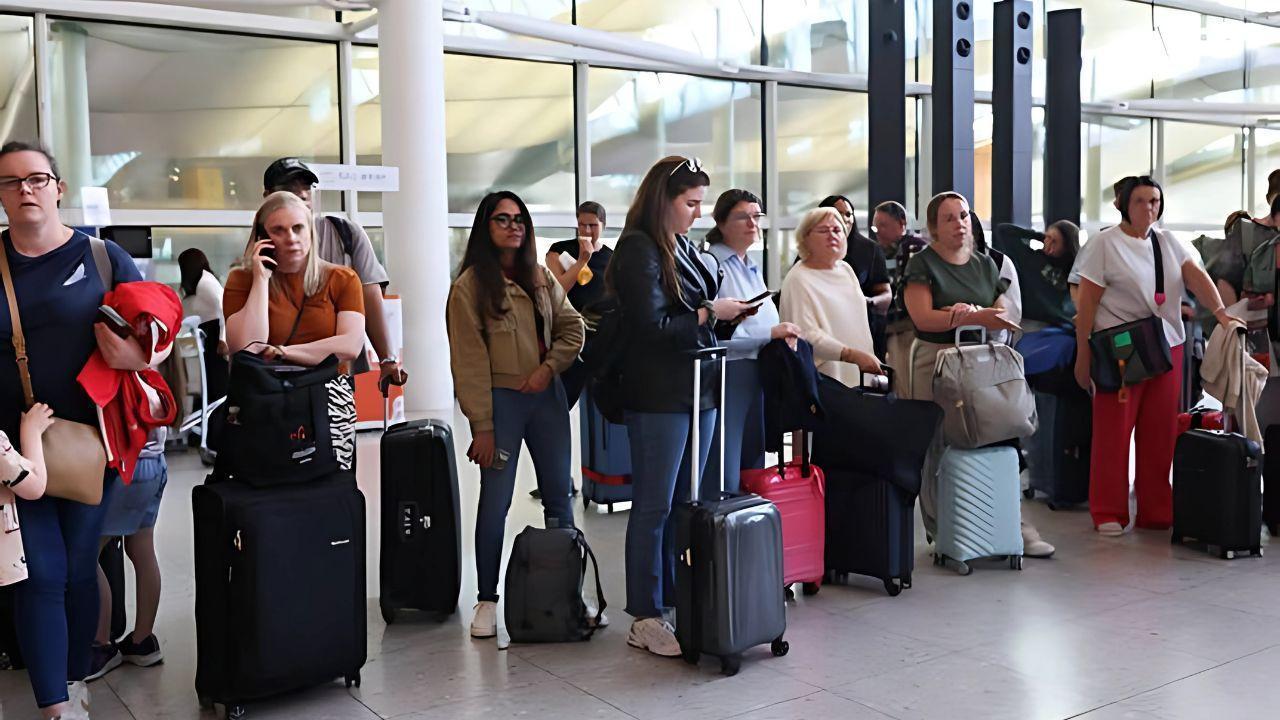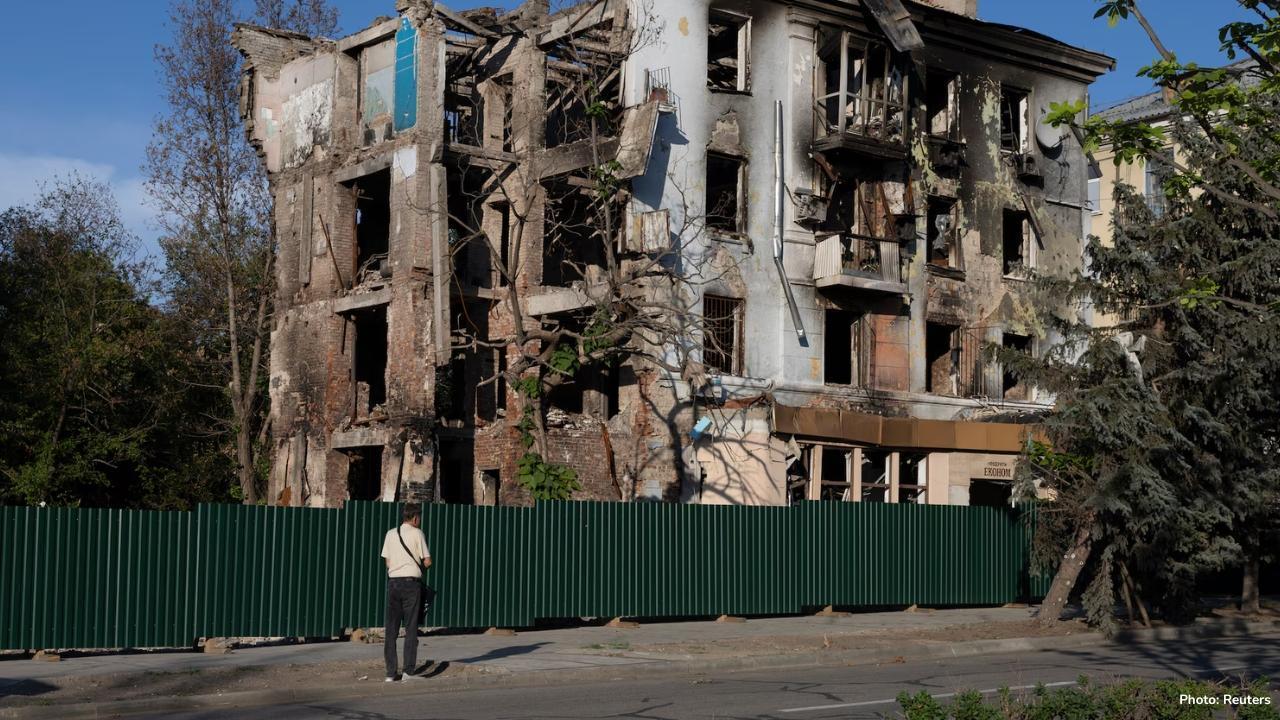
Post by : Priya
Photo:Reuters
On July 30 and 31, 2025, passengers planning to fly from Heathrow Airport found their schedules thrown into turmoil due to a sudden technical failure in the air traffic control system operated by National Air Traffic Services (NATS), the UK’s agency responsible for managing aircraft movements across the country. This failure, related to a radar system fault at the NATS Swanwick control center, forced authorities to ground flights temporarily, severely limiting the number of aircraft allowed to take off from Heathrow and several other major airports such as Gatwick, London City, Manchester, Edinburgh, and Birmingham.
What Happened?
The problem at the heart of this disruption was a radar-related technical glitch. Radar systems are vital because they track the position of aircraft to ensure safe distances between them. When the radar malfunctioned, NATS had to switch to a backup system to maintain safety. While this switch prevented any accident, it led to a drastic reduction in the air traffic capacity in the London area. Departing flights were suspended for around 20 minutes, but the impact stretched throughout the entire day because flights already scheduled needed to be rescheduled and passengers rebooked.
The Scale of the Disruption
More than 150 flights were canceled across UK airports on that day, and many more experienced delays and diversions. British Airways, Lufthansa, Finnair, Aer Lingus, KLM, Air Canada, Ryanair, EasyJet, and other carriers reported operational disruptions. Heathrow alone had dozens of flight cancellations spanning major international and European destinations, affecting thousands of travelers.
Passengers faced long queues and growing frustration at airports. Many travelers saw their holiday plans or business trips disrupted, and some feared missing important personal events such as weddings. The ripple effect was felt beyond Heathrow as delays and cancellations caused congestion in the broader European flight network.
Responses and Advice from Authorities
Airport officials and NATS engineers worked intensively to solve the radar problem, switching quickly to backup systems and gradually restoring normal flight operations throughout the day. Heathrow and other airports urged passengers to check their flight status before traveling and to stay in contact with airlines for updates.
Despite the frustration, airlines were constrained in their ability to provide compensation for cancellations caused by this technical fault. The disruption was classified as an "extraordinary circumstance," which under European and UK aviation law means airlines are generally not obligated to pay compensation for delays or cancellations beyond their control. However, passengers were advised to keep receipts for meals or overnight stays, as some costs for accommodations or food might be reimbursable.
Consumer rights organizations reminded travelers that while monetary compensation was unlikely, airlines should assist with practical support. Passengers were encouraged to know their rights and follow official claims procedures.
Previous Incidents Signal a Pattern
This is not the first time the UK’s air traffic control systems have experienced technical difficulties that ripple through international air travel. Only a few months earlier, Heathrow had suffered a 16-hour shutdown due to a power outage affecting thousands of passengers worldwide. Similarly, in 2023, a major software failure led to hundreds of Heathrow flight delays and cancellations, causing widespread disruption over the busy summer period.
Such repeated incidents have sparked concerns about the resilience and modernization of the UK’s aviation infrastructure. Technical errors in critical systems like air traffic control not only disrupt travel but also damage the credibility and competitiveness of UK airports on the global stage.
Broader Implications for UK Aviation
As Heathrow looks toward future expansion plans, including proposals for new runways by groups like the Arora Group, the stakes for reliable air traffic control are high. The new runway project aims to increase capacity and reduce delays, but it also highlights the urgent need for infrastructure upgrades and contingency planning to prevent such disruptions from escalating into major crises.
With rising passenger volumes expected, especially during peak travel seasons, UK air traffic control systems must be robust, flexible, and equipped to handle anomalies swiftly without widespread cancellations.
Heathrow flight cancellations










Dodgers Win Game 1 of Wild Card Series Against Reds
The Dodgers beat the Reds 10-5 in Game 1 of the Wild Card Series. Ohtani and Hernández hit two home

Tyreek Hill Suffers Major Knee Injury, Out for the Season
Miami Dolphins' star receiver Tyreek Hill tears ACL and other ligaments in win over Jets; season-end

China Raises Flag at Disputed Shoal in National Day Ceremony
On China’s National Day, its coast guard held a flag ceremony at Scarborough Shoal, asserting contro

Netanyahu Bets Big on Trump’s Gaza Plan, Faces Home Risks
Netanyahu supports Trump’s Gaza peace plan to regain global support, but his far-right partners in I

Ukraine’s frontline cities face fear but refuse to give up
In Ukraine’s frontline towns, people live with fear and danger daily, yet they show courage, refusin

US Government Shuts Down After Congress Fails to Agree
On October 1, 2025, the U.S. government began a partial shutdown due to Congress's inability to pass